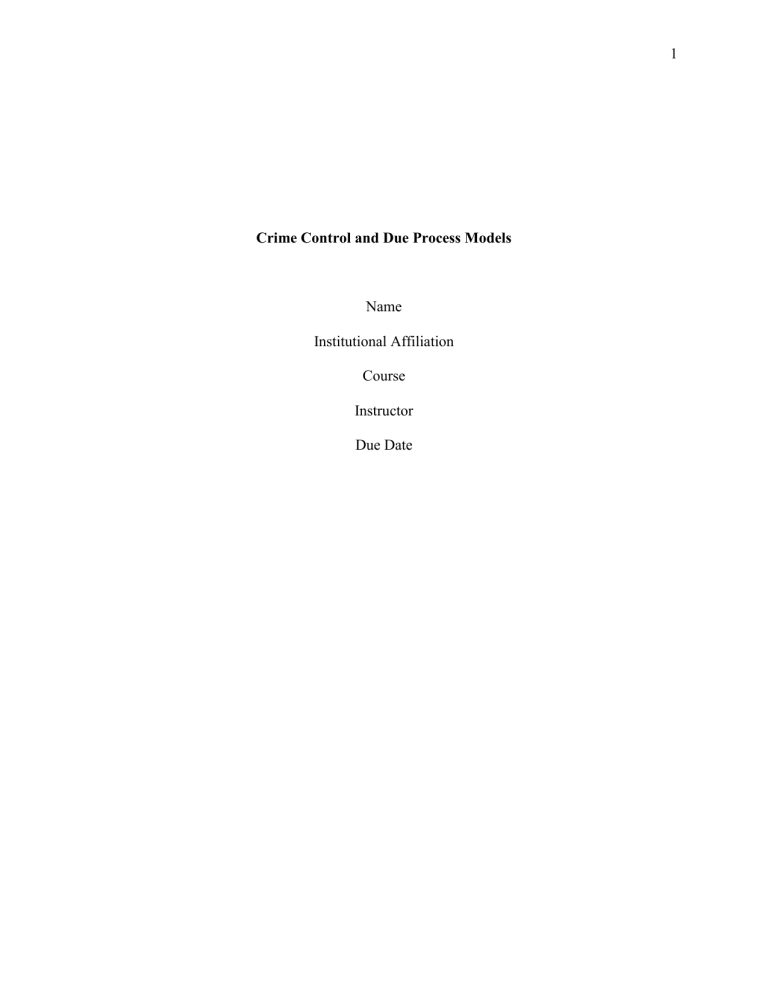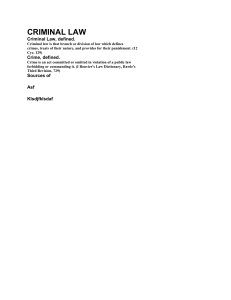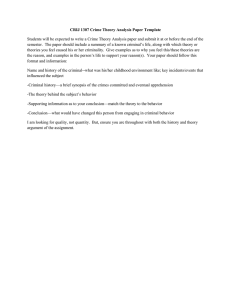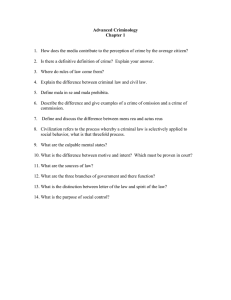
1 Crime Control and Due Process Models Name Institutional Affiliation Course Instructor Due Date 2 Crime Control and Due Process Models Herbert L. Packer formulated the criminal justice process's crime control and due process models. The crime control model focuses on suppressing and punishing crime and creating an orderly society. It prioritizes crime prevention rather than individual rights, presumes guilt, and seeks criminals' quick and severe punishment (Sanchez, 2019). Conversely, the due process model aims to establish a just and fair criminal justice system without infringing on people’s rights. It emphasizes rights and freedoms protection, presumes innocence until proven guilty, and ensures fairness in the criminal process. My general perspectives on crime and criminal justice align with the due process model. Several factors influence this alignment. For instance, I believe in a just society; therefore, the due process model’s focus on justice and fairness aligns with my values. Aviram (2011) notes that the due process model is suspicious of the investigatory stage and believes that it may feature biases and potential abuses. Even though due process procedures slow down the criminal justice process, they help ensure fairness and prevent wrongful convictions, which could have adverse repercussions for innocent persons. In addition, the U.S. Constitution emphasizes respecting individual rights and freedoms. The due process model reinforces this aspect by protecting accused persons' rights, allowing them to undergo fair trials, and preventing them from incriminating themselves (Sanchez, 2019). Therefore, it helps uphold the criminal justice system’s integrity. The Miranda warning is an example of a policy that supports my perspective on the due process model. This policy requires that police officers inform individuals of their rights, including the right to remain silent and ask for a lawyer. These warnings help prevent self- 3 incrimination and ensure that suspects exercise their rights. Therefore, this policy aligns with my perspectives of justice and fairness manifested in the due process model. 4 References Aviram, H. (2011). Packer in context: Formalism and fairness in the due process model. Law & Social Inquiry, 36(1), 237-261. https://www.jstor.org/stable/23011876 Sanchez, S. (2019). The crime control and due process models. In SOU-CCJ230 introduction to the American criminal justice system. Open Oregon Educational Resources. https://openoregon.pressbooks.pub/ccj230/chapter/1-8-due-process-andcrime-control-model/



